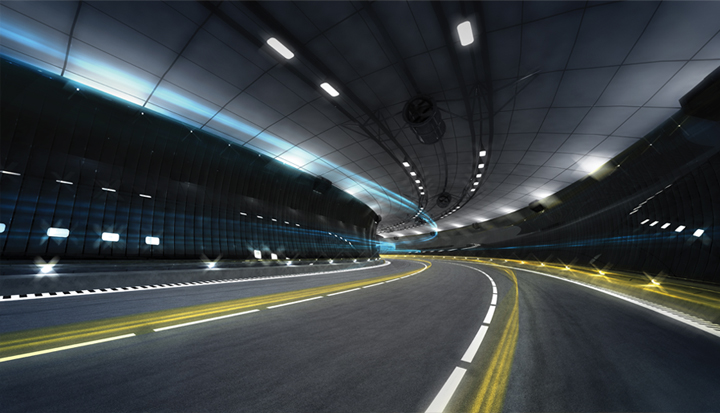
Amid Australia’s infrastructure boom, with more than $150 billion worth of public infrastructure projects currently underway or in the works nationwide, what lies beneath the soil are amongst the most critical pieces of infrastructure required to support our modern world. Tunnels are an increasingly necessary part of our road and rail networks and continue to be employed to support our water, sewer, and utilities system. Going underground has reduced travel time, minimised obstacles and protected water reservoirs for thousands of years. However, by their very nature, tunnel projects are susceptible to geotechnical and construction risks which, if ignored, can result in fatalities, damages, and lengthy proceedings.
This three-part series will explore the fundamentals of tunneling and insights into some of Australia’s current major tunnel projects, the risks involved and the main drivers of budget blowouts. Further, the series will address the legal complexities involved in a tunnel construction contract and how to ensure parties are placed in an optimal contractual position in the initial stages to ensure long term project success.
Some of the largest tunnel projects in Australia, either set to commence shortly or nearing completion, include:
- WestConnex (NSW), $16 Billion
- Sydney Metro City & Southwest (NSW), $12 billion
- Melbourne Metro Tunnel (VIC), $11 Billion
- West Gate Tunnel (VIC), $6.8 Billion
- Cross River Rail (QLD, $5.4 billion
WestConnex
Australia’s largest road infrastructure project, WestConnex, is a 33-kilometre traffic-light free motorway linking the west and south-west of Sydney with Sydney Airport and Port Botany. It includes approximately 19 kilometres of tunnels. The $16 billion project is almost halfway done with two sections open: M4 between Parramatta and Haberfield, and M8 between Kingsgrove and St Peters. Two 7.5-kilometre tunnels to link these sections (the ‘M4–M5 Link’) are set for a 2023 completion.
Sydney Metro
The NSW Government’s Sydney Metro program is Australia’s largest public transport project, and the first fully automated metro rail system, planning to meet demand by increasing rail capacity by up to 60 per cent by 2024. The City & Southwest section is the second stage, following the Northwest section, which opened in May 2019. The project involves a 17.1-kilometre twin tunnel and a tunnel under the Sydney Harbour which finished in March 2020. The project is set to open to the public in 2024. To deliver the tunnels, five TBMs were used, including a specialised TBM for the section under the Sydney Harbour due to ground and rock conditions found at the bottom of the harbour.
Challenges with Tunneling
Despite underground projects significantly improving Australian infrastructure and our way of living in a multitude of ways, they do not come without an abundance of challenges and setbacks. Unlike above-ground infrastructure which becomes a visual part of any city upon completion, the scale, engineering complexities and methods required to construct and operate our tunnels goes largely unnoticed by the millions of people who use them everyday. From digging in the dark to ensuring safety, minimising disruption, and bringing fresh air underground – these are just some of the challenges that must be overcome to make our tunnels a reality.
Legal Support on Tunneling Projects
Tunneling projects in Australia have seen increasingly larger budgets, requiring careful consideration of the underpinning processes and approaches to support them. Critically, it is important for principals, owners, and financers to assess the contracting approach.
For high-risk projects, traditional contracting approaches such as an EPC (Engineering, Procurement and Construct), D&C (Design and Construct), DCM (Design, Construct and Maintain), or a Construct only may all be considered. More recently the market is seeing collaborative contracts in high-value projects, as principals’ endeavor to align all parties’ commercial interests during the contracting stage. Collaborative options to contracting include target-cost, alliancing and partnering agreements.
Challenges with tunneling projects may lead to cost time and cost overruns, making it critical to select a delivery model that can adequately deal with these issues whilst allowing the project to proceed. Selecting a simple and practical dispute resolution process is often forgotten in the euphoria of a successful tender. We urge parties to consider a staged escalation of dispute processes that provide a forum to resolve the matter prior to litigation.
Lamont Project & Construction Lawyers
We have the industry knowledge and experience to assist both Principals and Contractors in all major tunnel projects, their unique challenges and implementing contractual frameworks which best align with project objectives. If you have any questions about any matters raised in the above article or the forthcoming series as it relates to your specific circumstances, please contact Lamont Project & Construction Lawyers.
The contents of this article is for information purposes only; it does not discuss every important topic or matter of law, and it is not to be relied upon as legal advice. Specialist advice should be sought regarding your specific circumstances.
Contact: Peter Lamont or Stephanie Purser
Email: peter@lpclawyers.com or stephanie@lpclawyers.com
Phone: (07) 3248 8500
Address: Suite 1, Level 1, 349 Coronation Drive, Milton Qld 4064
Postal Address: PO Box 1133, Milton Qld 4064
